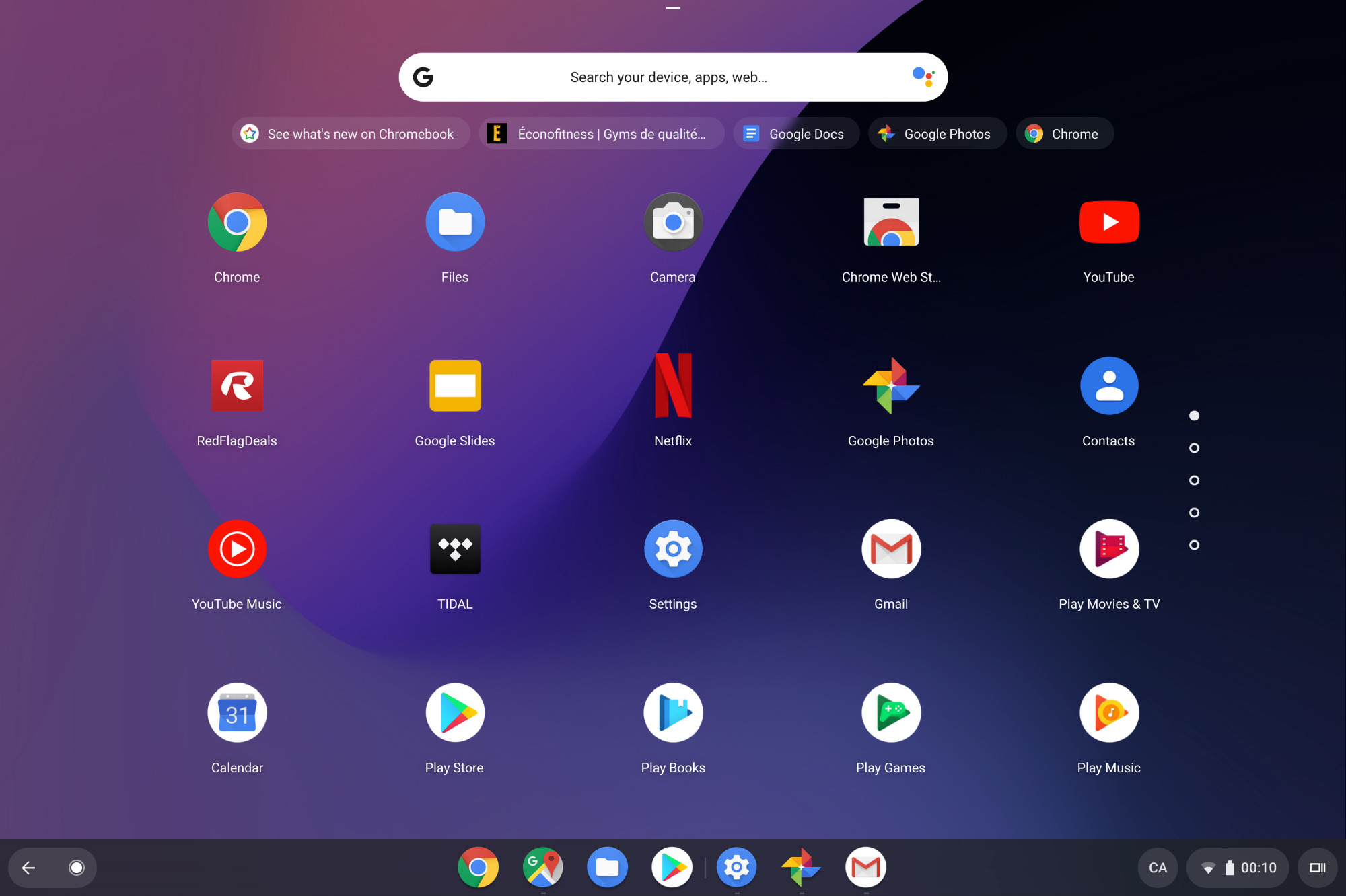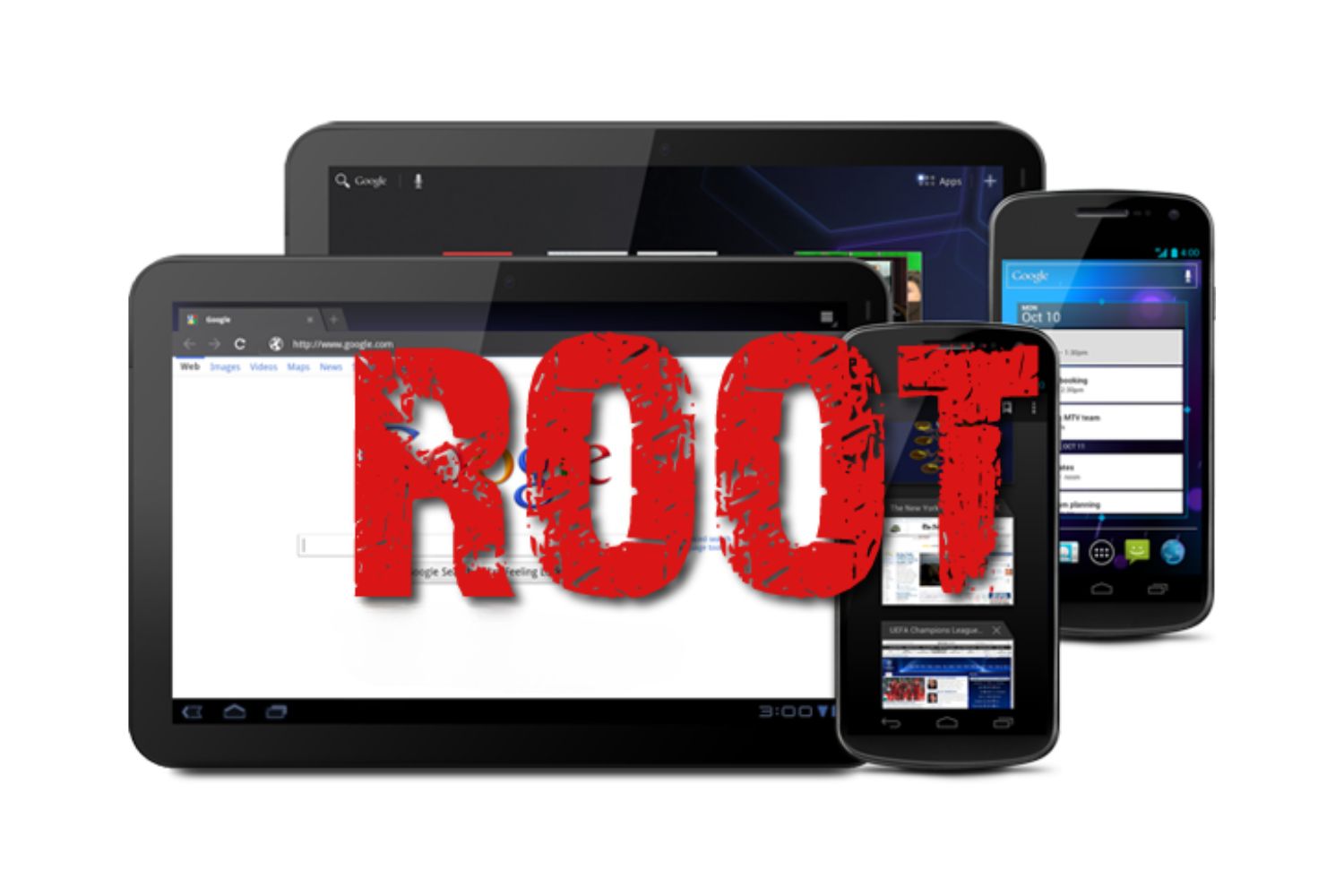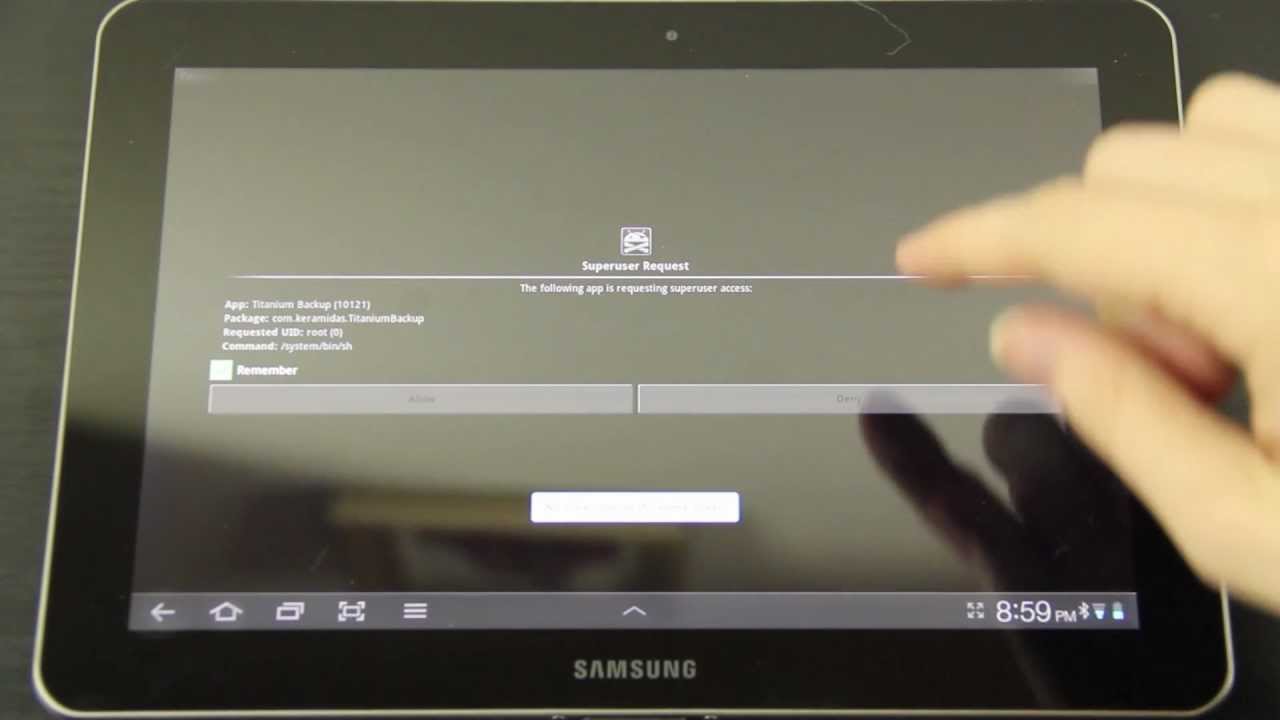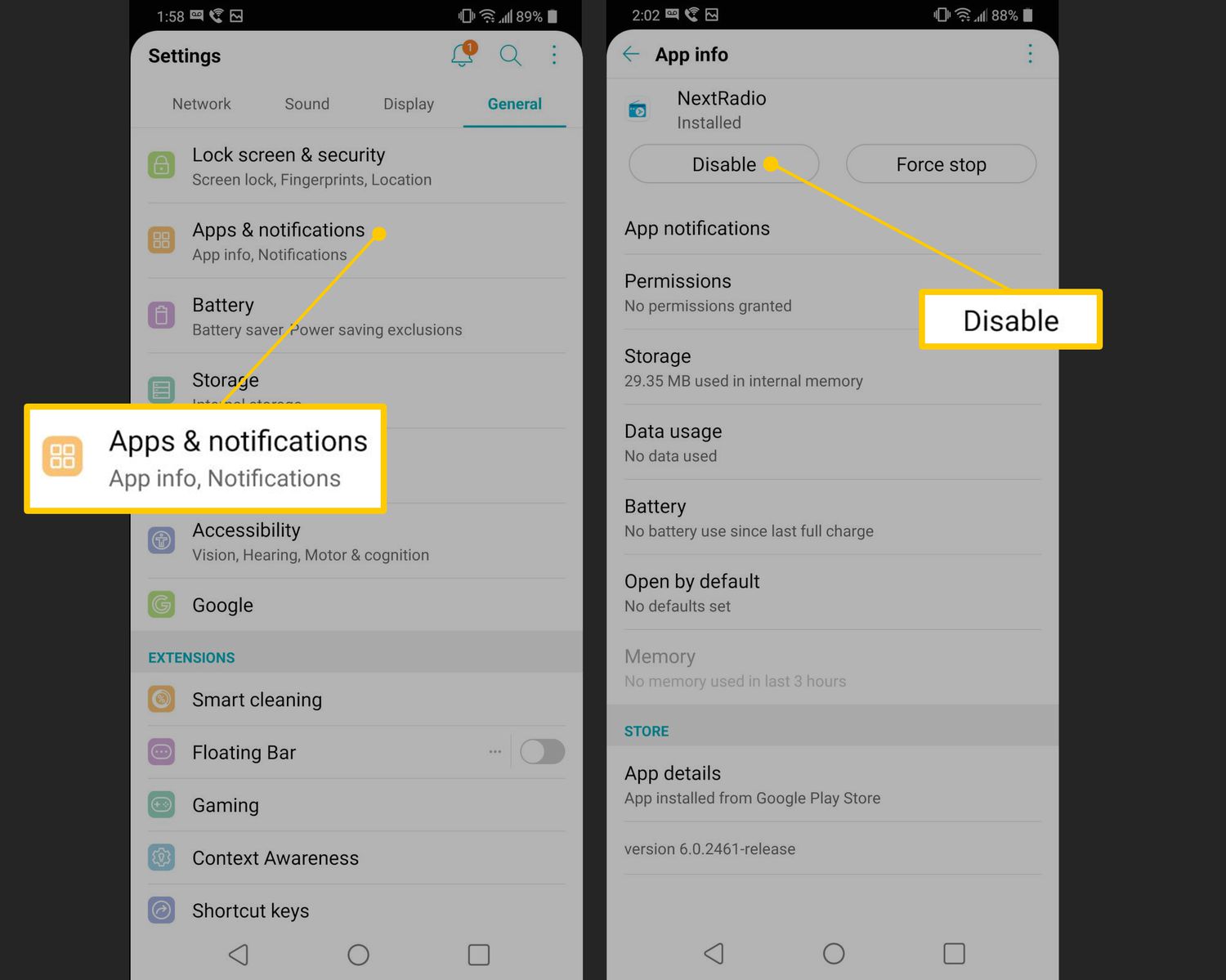Introduction
Rooting an Android tablet can unlock a world of possibilities and take your device to the next level. Whether you’re a tech enthusiast looking to customize your tablet or a power user seeking to access advanced features, learning about rooting can make a significant difference in your Android experience.
In simple terms, rooting an Android tablet means gaining privileged access to the device’s operating system. It allows you to bypass limitations imposed by the manufacturer, giving you greater control and freedom over your tablet’s software and hardware.
While the concept of rooting may sound intimidating to some, it’s a process that has gained popularity among Android users due to its numerous benefits. However, it’s important to understand the risks involved and proceed with caution.
In this article, we will delve into the world of rooting Android tablets. We’ll discuss what rooting entails, explore the reasons why you might want to root your device, and weigh the benefits against the potential risks. We’ll also guide you through the various methods and precautions to consider before embarking on the rooting journey.
Whether you’re a curious beginner or an experienced Android user, this article will provide you with the information you need to make an informed decision about rooting your Android tablet.
What is Rooting?
Rooting is the process of gaining administrative access or “root access” to the Android operating system on your tablet. In other words, it allows you to have complete control over your device’s software and hardware, giving you the ability to make changes and modifications that are otherwise restricted by default.
When you purchase a new Android tablet, it comes with a locked operating system, which means you have limited capabilities and cannot make certain changes. However, by rooting your tablet, you can unlock its full potential and take advantage of advanced features and customization options.
Rooting provides you with elevated privileges, allowing you to access and modify system files and settings that are otherwise inaccessible to regular users. It essentially gives you the freedom to customize your device, remove bloatware (pre-installed apps that you don’t need), install custom firmware, and even overclock your device for better performance.
By gaining root access, you become the “superuser” of your tablet, giving you complete control over its functionality. This includes the ability to uninstall system apps, customize the appearance of the user interface, and even install apps that require root access to function properly.
It’s important to note that rooting is not a feature intended for casual users. It requires technical knowledge and comes with certain risks, such as voiding your device’s warranty or potentially bricking your tablet if not done correctly. However, for those who are willing to take the risks and invest the time to educate themselves, rooting can greatly enhance their Android tablet experience.
Why Root an Android Tablet?
Rooting an Android tablet offers a wide range of benefits that can greatly enhance your device’s functionality and user experience. Here are some compelling reasons why you might consider rooting your Android tablet:
- Customization: Rooting gives you the ability to customize your tablet’s user interface, allowing you to personalize it to your liking. You can install custom themes, icon packs, and even modify system fonts to create a unique look and feel.
- Performance Optimization: With root access, you can optimize your tablet’s performance by installing custom kernels and mods. These modifications can help improve battery life, boost processing speed, and enhance overall system performance.
- Access to Root-only Apps: Many powerful apps and features are designed for rooted devices only. By rooting your tablet, you can unlock access to these exclusive apps that offer advanced functionalities and capabilities not available to regular users.
- Removal of Bloatware: Rooting allows you to uninstall or disable pre-installed apps that are often referred to as bloatware. These apps can take up valuable storage space and consume system resources. By removing them, you can free up space and improve your tablet’s performance.
- Backup and Restore: Rooting provides you with more comprehensive backup and restore options for your tablet. You can use advanced backup apps that allow you to create full system backups, including app data and settings. This can be a lifesaver if you ever encounter software issues or need to restore your tablet to a previous state.
- Wi-Fi Tethering: Rooting enables you to use your Android tablet as a Wi-Fi hotspot without having to rely on your carrier’s tethering plans. You can share your tablet’s internet connection with other devices, such as laptops or smartphones, and save on additional tethering fees.
- Ad Blocking: Root access allows you to block ads system-wide, including within apps and browsers. This can significantly enhance your browsing experience and save you from intrusive and annoying advertisements.
While these are just a few examples, the benefits of rooting your Android tablet are extensive and can vary depending on your specific needs and preferences. However, it’s important to weigh these benefits against the potential risks and consider if rooting is the right option for you.
Benefits of Rooting an Android Tablet
Rooting an Android tablet can unlock a multitude of benefits that can greatly enhance your device’s capabilities and user experience. Here are some key advantages of rooting:
- Customization: Rooting gives you complete control over your tablet’s appearance and functionality. You can customize the user interface, install custom ROMs, and tweak various settings to match your personal preferences.
- Improved Performance: With root access, you can optimize your tablet’s performance by removing bloatware, overclocking the CPU, and applying performance-enhancing tweaks. This can result in faster app loading times, smoother multitasking, and overall improved responsiveness.
- Access to Root-only Apps: Rooting allows you to install and use root-only apps that require administrative access to the device. These apps offer advanced features and functionalities not available to regular users, such as system-level file managers, advanced backup tools, and deep customization options.
- Expanded Storage: Some Android tablets have limited internal storage. By rooting your device, you can move apps and data to the SD card, freeing up valuable internal storage space and enabling you to install more apps and games.
- Ad Blocking: Root access lets you block ads system-wide, eliminating intrusive advertisements that can pop up in apps, games, and browsers. This enhances your overall user experience by providing a cleaner and more streamlined interface.
- Wi-Fi Tethering: Rooted tablets can act as Wi-Fi hotspots, allowing you to share your internet connection with other devices without relying on carrier-specific hotspot plans. This can be useful when you’re traveling or in areas with limited Wi-Fi connectivity.
- Battery Life Optimization: Rooting enables you to install battery-saving apps and mods that can extend your tablet’s battery life. These tools provide advanced power management features, such as controlling CPU frequency, limiting background processes, and optimizing power consumption for better battery longevity.
- Full System Backups: Rooted devices give you the ability to perform full system backups, including app data and settings. This ensures that you can easily restore your tablet to a previous working state if you encounter any issues or want to switch back to an earlier configuration without losing your data.
These are just a few of the many benefits of rooting an Android tablet. However, it’s essential to consider the potential risks involved and ensure that you fully understand the process before proceeding.
Risks of Rooting an Android Tablet
While rooting an Android tablet can offer a plethora of benefits, it’s important to be aware of the potential risks and drawbacks associated with the process. Here are some risks you should consider before proceeding with rooting:
- Voiding Warranty: Rooting your tablet can void its warranty, as it involves modifying the firmware and system files. If you encounter any hardware or software issues after rooting, the manufacturer or carrier may refuse to provide support or honor the warranty.
- Bricking the Device: Incorrect rooting procedures or installing incompatible software can lead to “bricking” your tablet. This means rendering it unusable, like a brick. While this is rare, it’s crucial to follow instructions carefully and ensure that you have a reliable backup before proceeding with any rooting methods.
- Security Risks: Rooting bypasses built-in security measures, making your device more vulnerable to malware, viruses, and other security threats. With root access, malicious apps or processes can gain control over your tablet’s system files and compromise your data and privacy. It’s essential to exercise caution when installing apps from unofficial sources.
- Instability and Incompatibility: Rooting may introduce system instability or compatibility issues. Modifying system files or installing custom firmware can lead to unexpected behavior, including system crashes, app compatibility problems, or frequent reboots. It’s crucial to research and ensure that the custom software you’re using is stable and supported by your tablet model.
- No Official Updates: Rooting often prevents over-the-air (OTA) system updates from being installed on your tablet. Manufacturers release software updates to offer bug fixes, security patches, and new features. By rooting, you may miss out on these official updates unless you manually install custom ROMs or firmware updates.
- Loss of Data: Rooting process or incompatible modifications can inadvertently lead to data loss. It’s crucial to backup your data before attempting any root-related procedures. Even with a backup, there is a risk of losing some data during the rooting process.
- Difficulty in Unrooting: If you decide to unroot your tablet later on, it may not always be a straightforward process. Some devices may require specific tools or methods to revert back to the original firmware, and unrooting may not always be successful, potentially leaving your tablet in an unstable state.
These risks are worth considering before deciding to root your Android tablet. It’s essential to weigh the potential benefits against the risks and evaluate whether rooting is the right choice for your specific needs and circumstances.
How to Root an Android Tablet
Rooting an Android tablet involves a series of steps that must be followed carefully to ensure a successful outcome. Here is a general overview of the process:
- Research: Before starting, research your specific tablet model to find the appropriate rooting method. Different tablets may require different tools and procedures. Make sure to gather all the necessary information, including compatible software and resources.
- Backup: Back up all your important data, files, and settings. Rooting can potentially lead to data loss or a complete wipe of your tablet, so it’s vital to have a secure backup to restore your device in case of any issues.
- Enable USB Debugging: Enable USB debugging in the Developer Options of your tablet’s settings. This allows your computer to communicate with the tablet during the rooting process.
- Install Drivers: Install the USB drivers for your tablet on your computer. These drivers ensure a proper connection between your tablet and computer, facilitating the rooting process.
- Select Rooting Method: Choose the rooting method that is compatible with your tablet. This may involve using specific software, custom recovery tools, or flashing custom firmware. Follow the instructions provided by reputable sources to ensure a safe and successful rooting process.
- Unlock Bootloader: If required, unlock the bootloader of your tablet. This step allows you to install custom firmware, gain root access, and make modifications to the operating system. The process of unlocking the bootloader may vary depending on the tablet manufacturer and model.
- Root Your Tablet: Follow the specific instructions for your chosen rooting method to root your tablet. This typically involves running specific commands, flashing files, or using a rooting tool. Ensure that you carefully read and understand each step before proceeding.
- Verify Root Access: After the rooting process is complete, verify if your tablet has successfully gained root access. You can use root checker apps from the Play Store to confirm whether your device is rooted or not.
- Install Custom Recovery (Optional): If you wish to install custom ROMs or firmware on your tablet, you may need to install a custom recovery, such as TWRP or ClockworkMod recovery. This will allow you to flash custom firmware packages and make advanced system modifications.
It’s important to note that the rooting process can vary depending on your tablet model and the specific rooting method you choose. Always refer to reliable sources and follow the instructions carefully to avoid any potential issues or damage to your tablet.
Popular Rooting Methods for Android Tablets
Rooting an Android tablet can be achieved through various methods, each with its own advantages and requirements. Here are some popular rooting methods that you can consider for your Android tablet:
- Magisk: Magisk is widely regarded as one of the most popular rooting methods for Android devices. It is a systemless root solution that allows you to root your tablet while still retaining the ability to use apps that may not work on rooted devices. Magisk also offers additional features such as systemless module installation and built-in Magisk Manager for easy module management.
- SuperSU: SuperSU is another popular rooting method that has been used for many years. It provides a simple and straightforward way to gain root access to your Android tablet. SuperSU allows you to manage app permissions and provides options to customize the root settings for different apps.
- One-Click Rooting Tools: There are various one-click rooting tools available, such as KingoRoot, iRoot, and Towelroot, which offer a simplified approach to root Android devices. These tools typically require connecting your tablet to a computer and running the rooting software, making the process more accessible for beginners.
- Custom Recovery: Custom recoveries like TWRP (Team Win Recovery Project) and ClockworkMod Recovery provide a more advanced rooting method. These recoveries allow you to install custom ROMs, take full device backups, and flash root packages, providing extensive customization options for your tablet.
- Manufacturer-Specific Methods: Some tablet manufacturers, such as Google’s Nexus and Pixel devices, offer their own official methods for unlocking the bootloader and gaining root access. These methods may involve developer tools and require technical knowledge, but they provide a more reliable and manufacturer-sanctioned approach to rooting.
- Community Forums and XDA Developers: Community forums and websites like XDA Developers are valuable resources for finding device-specific rooting guides, custom ROMs, and rooting methods. These forums often have dedicated sections for different tablet models, where you can find detailed procedures and discussions related to rooting.
Before choosing a rooting method, it’s essential to research and understand the specific requirements and risks associated with each method. Additionally, always refer to reputable sources and follow step-by-step instructions provided by trusted community members or established developers.
Steps to Root an Android Tablet
Rooting an Android tablet requires careful execution of a series of steps to ensure a successful rooting process. While the specific steps may vary depending on your tablet model and the chosen rooting method, here is a general outline of the process:
- Step 1: Backup Your Data: Before proceeding with rooting, it’s crucial to back up all your important data, files, and settings. This ensures that you can restore your tablet to a previous state if anything goes wrong during the rooting process.
- Step 2: Enable USB Debugging: Go to your tablet’s Developer Options in the Settings menu and enable USB Debugging. This allows your tablet to communicate with a computer during the rooting process.
- Step 3: Install the Necessary Drivers: Install the USB drivers for your tablet on your computer. These drivers establish a connection between your tablet and the computer, enabling file transfer and communication.
- Step 4: Choose a Rooting Method: Select the rooting method that is compatible with your tablet model and suits your preferences. Research different rooting methods and choose one that has a good track record of success and positive user feedback.
- Step 5: Download and Install the Required Software: Download the necessary rooting software or tools for your chosen method. Ensure that you obtain them from reputable sources to avoid malware or malicious software.
- Step 6: Connect Your Tablet to the Computer: Connect your Android tablet to the computer using a USB cable. Ensure that you have a stable and reliable connection.
- Step 7: Run the Rooting Software: Launch the rooting software on your computer and follow the provided instructions. The software will guide you through the rooting process, which may involve executing specific commands or running automated tools.
- Step 8: Wait for the Rooting Process to Complete: Depending on the method and complexity of the rooting process, it may take some time for the software to complete the rooting procedure. Follow the on-screen prompts and be patient while the software does its work.
- Step 9: Verify Root Access: After the rooting process is complete, you can verify if your tablet has been successfully rooted. Install a root checker app from the Play Store and run it to confirm if your tablet has gained root access.
- Step 10: Install a Root Management App (Optional): To manage root permissions and control access for apps, consider installing a root management app such as SuperSU or Magisk Manager. These apps allow you to manage root access on your tablet easily.
Remember to always follow the specific instructions provided by the rooting method you choose. It’s important to note that rooting can be a technical and potentially risky process, so proceed with caution and make sure to thoroughly research and understand the steps before proceeding.
Precautions to Consider before Rooting an Android Tablet
Before diving into the process of rooting your Android tablet, it’s crucial to take certain precautions to ensure a smooth and risk-free experience. Here are some precautions to consider before rooting your tablet:
- Research: Thoroughly research your tablet model and the specific rooting method you plan to use. Familiarize yourself with the risks, requirements, and success rates associated with the method. Join online forums and consult communities to gather information and insights from experienced users.
- Backup Your Data: Create a comprehensive backup of all your important data, files, and settings. Rooting your tablet involves modifications to the system, which can potentially lead to data loss or a complete wipe of your device. Ensure that you have a backup to restore your tablet in case of any issues.
- Understand the Risks: Rooting can carry risks, such as voiding the warranty, bricking your device, or exposing it to security vulnerabilities. Familiarize yourself with these risks and evaluate if the benefits of rooting outweigh the potential drawbacks for your specific needs.
- Follow Reliable Instructions: Only use reputable sources and follow step-by-step instructions from trusted community members or verified developers. Ensure that the rooting method and tools you use are compatible with your tablet model to avoid compatibility issues and to increase the chances of a successful root.
- Charge Your Tablet: Make sure your tablet has a sufficient battery charge before starting the rooting process. A low battery during the rooting process can cause interruptions or failure. It’s recommended to have at least 50% battery charge to prevent unexpected shut-downs.
- Be Aware of Your Tablet’s Bootloader: Some tablets require an unlocked bootloader to root successfully. Understand the steps involved in unlocking the bootloader, as it can vary depending on the tablet model. Keep in mind that unlocking the bootloader may also void your warranty.
- Use Reliable Software and Tools: Download rooting software and tools from trusted sources to avoid malware or malicious software that could potentially harm your tablet. Verify the source, read user reviews, and check for the authenticity of the software before proceeding.
- Be Prepared for Potential Consequences: Understand that if any issues arise during the rooting process, there may not always be an immediate solution, and you might face difficulties in returning your tablet to its original state. It’s vital to be prepared for the possible consequences and accept the responsibility that comes with rooting.
- Stay Updated: Keep yourself informed about the latest developments, updates, and security concerns related to root methods and tools. Staying updated will help you make informed decisions and ensure that you are utilizing the most reliable and secure rooting techniques.
These precautions will help you approach the rooting process with caution and minimize the risks involved. Remember that rooting is a technical procedure that requires careful consideration and knowledge. Take your time, follow instructions diligently, and ensure that you are fully prepared before proceeding to root your Android tablet.
Frequently Asked Questions about Rooting Android Tablets
Here are some common questions that users have about rooting Android tablets:
- Is rooting legal?
- Can I unroot my tablet?
- Will rooting void my tablet’s warranty?
- Can I still receive system updates after rooting?
- What are the security risks of rooting?
- Can I still use my banking apps and other secure apps after rooting?
- Should I backup my tablet before rooting?
- Is it worth rooting my tablet?
Rooting your Android tablet is legal in most countries, as it grants you access to the operating system that you legally own. However, it’s essential to note that rooting may void your device’s warranty, and any damage caused during the rooting process may not be covered by the manufacturer.
Yes, it is possible to unroot your tablet. You can unroot your device by flashing the original firmware or by using specific unrooting methods provided by the rooting community. However, unrooting might not always be successful, and there is a risk of data loss or device instability.
Yes, rooting may void your tablet’s warranty. Manufacturers typically do not support rooted devices, as it involves modifying the system files. However, some manufacturers allow you to revert to the original firmware and perform a factory reset to restore the warranty status, so it’s best to check with the manufacturer’s policies.
Rooting your tablet may prevent you from receiving official over-the-air (OTA) system updates. Manufacturers release these updates to provide bug fixes, security patches, and new features. However, you can still manually install custom ROMs or firmware updates that are specifically designed for rooted devices.
Rooting can expose your tablet to potential security risks. By gaining root access, you bypass certain security measures put in place by the manufacturer, making your tablet more vulnerable to malware and other malicious attacks. It’s important to exercise caution when installing third-party apps and only use trusted sources.
While some banking and secure apps do not work on rooted devices due to security concerns, there are methods to bypass this limitation using tools like Magisk’s “Magisk Hide” feature. This feature hides the root access from selected apps, allowing them to be used on rooted devices.
Yes, it is highly recommended to backup your tablet before rooting. Rooting involves making changes to the system files, which might result in data loss or the need to perform a factory reset. A backup ensures that you can restore your tablet to its previous state if anything goes wrong during the rooting process.
Whether rooting is worth it depends on your needs and preferences. Rooting can provide greater customization options, advanced features, and improved performance. However, it also comes with risks and potential drawbacks. Carefully weigh the benefits against the risks and consider if rooting aligns with your requirements.
Keep in mind that these answers are general and may vary depending on your specific tablet model and the rooting method chosen. It’s always recommended to consult reliable sources and the respective online communities for the most up-to-date and accurate information regarding rooting your Android tablet.
Conclusion
Rooting an Android tablet can unlock a world of opportunities, allowing you to customize your device, enhance performance, and access advanced features. However, it’s essential to approach rooting with caution and consider the risks involved.
In this article, we explored what rooting entails and discussed the reasons why you might want to root your Android tablet. We examined the various benefits that come with rooting, such as customization options, improved performance, access to root-only apps, and the ability to remove bloatware. We also discussed the risks, including voiding warranties, bricking the device, security vulnerabilities, and potential data loss.
We provided an overview of the rooting process and outlined precautions to consider before proceeding. We also addressed common questions about rooting Android tablets to help you make an informed decision.
While rooting can offer significant benefits, it requires technical knowledge and comes with potential risks. It’s crucial to research your tablet model, choose a reliable rooting method, and follow instructions carefully to minimize the chances of encountering issues.
Ultimately, whether or not you should root your Android tablet is a personal decision. Consider your needs, preferences, and willingness to take on the risks involved. While rooting can enhance your tablet’s capabilities, always proceed with caution and ensure that you fully understand the consequences of your actions.
Remember, rooting your tablet introduces changes to the operating system that may impact its stability and security. It’s important to weigh the benefits against the risks and make a well-informed decision based on your individual requirements.

























